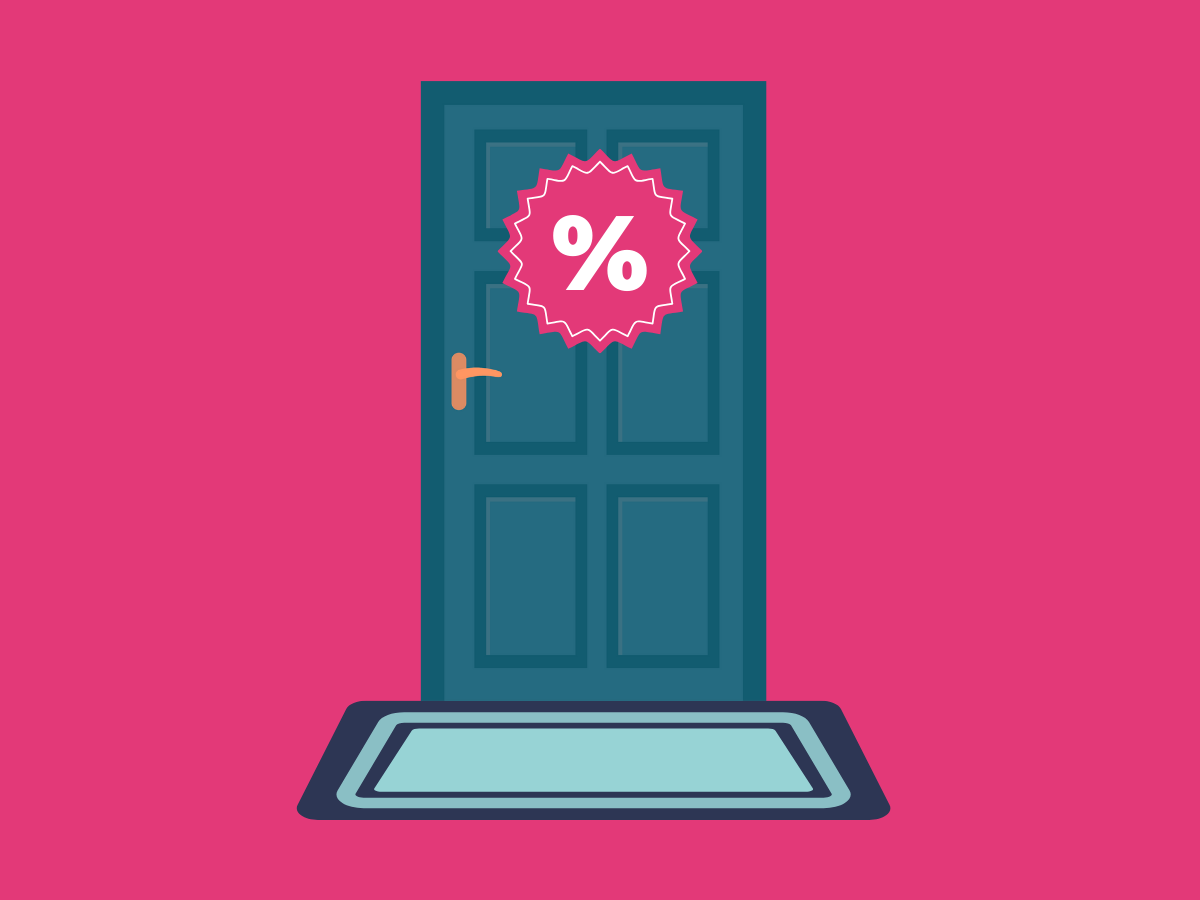Optimizing your welcome discount

Your welcome discount is working. But it could work harder.
Most eCommerce stores successfully use welcome discounts to convert visitors into first-time buyers and capture email addresses. You're already reducing purchase barriers and creating immediate value perception.
The opportunity lies in moving beyond one-size-fits-all offers toward targeted approaches that boost conversions and profit margins.
Where you probably are right now
Your current setup likely includes a fixed percentage discount that appears after 30-60 seconds. Maybe it's 10% off first orders, delivered through a pop-up that captures email addresses. This approach works because it creates immediate value and reduces psychological barriers to purchasing.
The challenge isn't that this basic strategy fails. It treats every visitor the same, leaving money on the table. Someone ready to buy needs different incentives than someone just browsing.
Understanding visitor intent changes everything
Different visitors arrive with varying levels of purchase intent. Someone landing on a specific product page from Google search has higher intent than someone browsing your homepage from social media.
Your eCommerce platform provides behavioural data that lets you segment visitors in real-time:
- New vs. returning visitors
- Traffic source (search vs. social vs. direct)
- Pages viewed
- Time on site
- Device type and browsing patterns
High-intent visitors often convert with smaller incentives. They're already convinced about your products and just need a slight push. Low-intent visitors might need larger discounts and promotions to overcome hesitation.

Beyond percentage discounts
Most welcome offers default to percentage discounts, but other incentive types often perform better depending on your average order value and customer psychology.
Free shipping typically outperforms small percentage discounts for orders under $75. According to research from the Baymard Institute, 39% of shoppers abandon their shopping carts because the extra costs are too high.
Fixed dollar amounts create a psychological impact different from percentages. A $10 discount feels concrete and immediate, while 10% requires mental calculation. For higher-value items, percentages often work better, but fixed amounts can drive faster decisions for everyday purchases.
Testing opportunities include:
- Free shipping vs. percentage discounts
- Fixed amounts vs. percentages
- Category-specific offers vs. site-wide discounts
- Immediate vs. exit-intent timing
Aligning discounts with business goals
Intelligent discount optimization serves multiple business objectives beyond just increasing conversions. You can use welcome discounts to manage inventory, especially seasonal items or overstocked products.
Category-specific offers let you promote high-margin items or clear slow-moving stock. Instead of offering 10% off everything, you might offer 15% off outerwear or free accessories with electronics purchases in March.
Seasonal alignment matters too. Smaller discounts often maintain conversion rates while preserving margins during peak shopping periods. During slower periods, larger discounts might be necessary to maintain sales velocity.

Personalization that works
The most effective welcome discounts incorporate personalization beyond basic visitor segmentation. Geographic location affects shipping costs and delivery expectations. Mobile visitors often have different browsing patterns and conversion triggers than desktop users.
Someone who views your FAQ section might be price-sensitive and respond well to discount offers. Someone who immediately checks your return policy might be risk-averse and prefer guarantees over price reductions.
Customer experience improves when offers feel relevant rather than generic. A visitor browsing baby products probably doesn't want a discount on power tools, even if they're larger.
Advanced optimization tactics
Progressive discount strategies can capture visitors at different stages of consideration. Start with a low-friction offer like free shipping, then escalate to percentage discounts for visitors who don't immediately convert, and finally offer your most substantial incentive through exit-intent triggers.
This graduated approach respects visitor psychology while maximizing profitability. Not everyone needs your strongest offer to convert, so why give away maximum margin to customers who would have purchased with less incentive?
Urgency elements increase conversion speed without requiring larger discounts:
- Time-limited offers (24-48 hours work best)
- Stock-based urgency for genuinely limited items
- Seasonal relevance that feels authentic
The key is authentic urgency rather than manipulative tactics. Customers can distinguish between absolute scarcity and artificial pressure.
Measuring what matters
Successful discount optimization requires tracking metrics beyond simple conversion rates. Revenue per visitor tells a more complete story than conversion rate alone. A strategy that converts fewer visitors but generates higher average order values might be more profitable overall.
Customer lifetime value provides the ultimate measurement of discount effectiveness. Welcome discounts that attract customers who make repeat purchases at full prices deliver better long-term returns than those that attract one-time bargain hunters.
Key metrics to track:
- Revenue per visitor (not just conversion rate)
- Average order value by discount type
- Customer lifetime value by acquisition method
- Profit margin impact per campaign
Your implementation roadmap
Start with visitor segmentation based on behavior rather than demographics. Most eCommerce platforms provide this capability without requiring complex technical implementation.
Week 1: Audit your current performance by reviewing discount redemption rates, average order values, and mobile vs. desktop conversion patterns.
Week 2: Implement basic segmentation by separating new vs. returning visitors and testing different offers for each group.
Week 3: Test discount types by running percentage vs. fixed amount experiments and comparing free shipping vs. percentage discounts.
Week 4: Add urgency elements by implementing time-limited offers and testing different urgency messaging.
Test one variable at a time to isolate the impact of specific changes. Discount amount, discount type, timing, and messaging affect performance, but testing multiple variables simultaneously makes it difficult to understand which changes drive results.
Common mistakes to avoid
Setting discounts too high trains customers to wait for deals rather than purchasing at regular prices. This pattern erodes margins over time and makes it challenging to maintain profitability without constant promotional activity.
Poor mobile optimization can undermine even well-designed discount strategies. Clunky pop-ups, difficult code entry, and slow loading times create friction that cancels the incentive value.
Ignoring expiration strategies means codes get used months later with no urgency benefit, while giving away full margin. Set reasonable expiration periods that create decision pressure.
Moving forward strategically
Your current welcome discount represents a solid foundation for customer acquisition. These optimization approaches help you build something more profitable and strategic on top of that foundation.
First, focus on understanding your visitor behavior patterns, then test improvements systematically. Small changes in discount strategy often produce significant improvements in conversion rates and profitability.
The goal isn't just getting first sales. It's starting profitable customer relationships that deliver value for your business and customers over time. Welcome discounts are optimized thoughtfully to serve that larger strategic purpose while improving immediate eCommerce performance.
Start with one optimization approach, measure the results carefully, and build on what works. Your welcome discount can work harder for your business while delivering better customer value.






